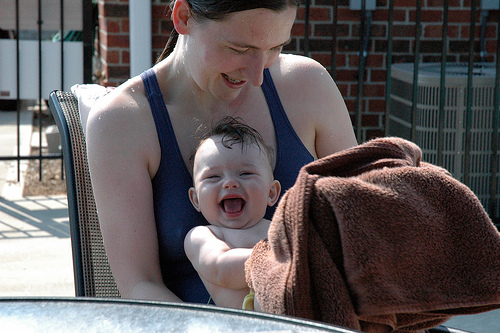I don’t think any of us could have anticipated L’s success on the potty chair. In the past ten days or so, L has done her messier business almost exclusively in the potty chair.
So, she’s potty trained, right!? I mean, a couple of accidents, statistically speaking, are fairly meaningless. And the fact that she’s not telling us that she needs the potty chair is a function of her age and development and nothing more. After all, she knows what it’s for — every time you put her on it, she does her best to have a BM.
Well, admittedly, she’s not potty trained in the truest sense of the term, but I think we’ve laid a fairly sure foundation for a quick, painless training when the “real” time comes…

























































